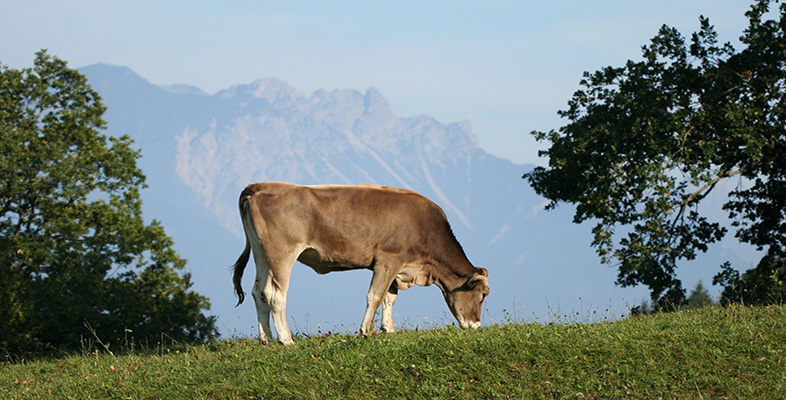5.3 Hindgut fermenters
The odd-toed ungulates (comprising the order Perissodactyla), the horses, tapirs and rhinoceroses, are hindgut fermenters, as are elephants. Update Table 2 with this information. These animals have a relatively simple, small undivided stomach, but this time an even larger caecum and colon where the microbes are housed and where fermentation takes place, as you can see in Figure 3. One disadvantage of this method is that by the time the food reaches the caecum and colon, it has passed the main absorptive region of the gut (the small intestine) and so less absorption of the products of digestion is possible. Secondly, the large numbers of dead microbes also cannot be digested, as they can in ruminants, where they pass from the rumen into the small intestine with the remainder of the partly digested food. Here they are located in the part of the gut beyond the region of digestion.
Horses and their relatives overcome this situation in an ingenious way. Remind yourself of the position of the caecum as shown in Figure 3. It projects from the side of the gut, rather than being part of the main passage through. Food can therefore leave the caecum and instead of moving onwards into the colon, it can be moved back into the small intestine by reverse peristaltic movements (peristaltic movements are contractions of the muscles in the gut wall which propel the contents along). This process, known as intestinal reflux, allows further digestion and absorption to take place, before the food continues back again in its normal direction through the gut.
SAQ 12
Look again at LoM p. 96. Do you think that rabbits are hindgut fermenters? How do they gain the maximum nutritional value from their food?
Answer
Rabbits are indeed hindgut fermenters. The partly digested food, along with many of the microbes, is passed out as sticky black pellets, which are immediately eaten again, so that the material passes again through the digestive system. Further digestion and absorption can take place in the stomach and small intestine, and the material then bypasses the caecum on its second pass through, and is voided as the normal round rabbit droppings seen near their burrows.
Investigations show that this behaviour of rabbits, known as coprophagy, is common in other species of the order to which rabbits belong (the lagomorphs, LoM p. 95) and it has also been reported in rodents such as capybaras and coypus. Add these hindgut fermenters to complete your version of Table 2 and then compare it with Table 3, below.
| Ruminants | Hindgut fermenters | Other |
|---|---|---|
| chevrotains | sloths | pigs, peccaries and hippos (pseudo-ruminants) |
| deer, including caribou (reindeer) | tapirs | |
| cattle | hairy rhinoceros | |
| antelopes, including wildebeest | rhinos (black and white) | |
| gazelles | elephants | |
| camels | zebras and horses | |
| rabbits and rodents |
